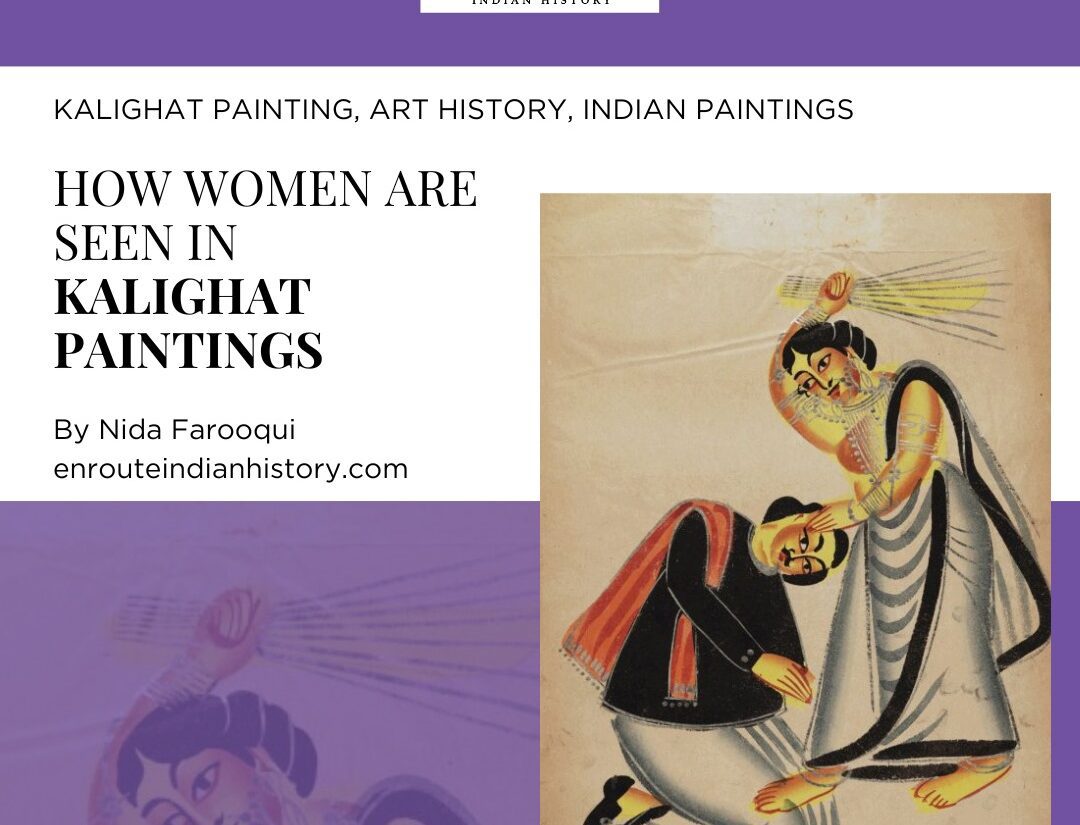If you hear calls at night don’t look back : Exploring stories of Nishir Daak
- EIH User
- November 2, 2023
Nishi Daak forms a part of Popular folklore in the regions of the Eastern part of India like Bengal Bihar. In Bengali “Nishi ” means night or dark but is not colloquially used, rather restricted to literary usage, and “dak” or daak means call or beckoning someone. The Nishi Dak is a spirit that calls out or summons one at night or in the dark in a familiar voice. It is a very dangerous spirit, once fairly commonly encountered in Eastern India. In Bengal, it is known as the Nishir Daak or Call of the Night Spirit, Bihar and Jharkhand where it is known as the Nishi. A story aptly describes Nishi Daak –Bijoy Chakraborty was returning from his work as night dawned. He moved through the fields at a fast pace, he heard a faint yet clear voice calling him from behind “Biju, where are you going?” (Biju kothay jacchis) At first, he thought it might be someone he saw in his surroundings but there was no one and yet again he heard the voice a bit louder and the sound was feminine. It again asked, “Biju, where are you going? Come to me ( Biju kothay jachis, amar kache ay ) This time it sounded to the voice that resembled his grandma, who reared him from his childhood and who died a few years back. Bijoy responded to the voice ( Didima tumi kothay ) (Grandma where are you ) , something by then had changed someone told in his ears that she was there he ran towards that voice and started running in a stage of trance, going after a few kilometers he entered the woods and a layer of mist covered him and he never seen again in spite of the villagers searching every nook and corner.
Operation of Nishi
The Nishi calls out to its victim at night in the voice of a known person, appears as a form that the victim can’t completely see because it’s always in the distance, or appears in the form of the known person whose voice it has used, and continues to beckon the intended victim to follow it. It goes quickly and far ahead of the victim, usually leading the way to a desolate spot where it exposes its actual form to the helpless victim and nearly always kills the victim. The killing takes place in a variety of ways. The Killing of the victim is not always mandatory; sometimes they can be left unconscious if the Nishi grows an affection towards him.
Sometimes, Nishis can talk and converse with the victim in a voice that the victim recognizes and the conversation phase can take place long or short depending on the individual’s attraction and trust in the Nishi after that the person reaches a state of trance and usually acquired immense inhuman power to swat any barrier that is put forward before him to reach the Nishi. Nishis rarely kill people close to their homes and stories tell that the killings mostly happen near trees or in mist. The body of the victim almost all the time disappears leaving no remnants making it hard for the person’s close one to understand the real way of his or her death. Although the victims are mostly male. Furthermore, it normally chooses only one victim at night, and only on dark moon evenings. The hazy and unclear form of a Nishi is rarely visible to anyone other than the victim. But those who have seen them are left with an unimaginable scar for the rest of their life. In one story it is described as “his eyes were burning red lumps of coal and it seemed that he was going to swallow my friend alive”
Beliefs about Nishi
The Nishis are thought to be the spirits of persons who did not have a respectful or complete release or pind-daan as they transitioned from the earth to the astral worlds. A tea trader near my house is from Bihar, and he tells me that there is a Nishi who is always on the lookout in and around his area. They also know that the Nishi is the soul of a peasant who died many decades ago but whose family did not complete the ceremonies at Gaya’s Pret Pahar — the Mountain of Spirits. Besides, Nishi can also happen due to a curse, something which is referred to as Kaalratri ( meaning black or dark night ) where at least one individual gets called off to death. This generally happens for a month or two in a year and then stops or happens on a particular day in a month. The soul that could not attain mukti or be freed from worldly shackles first plagued the family as a pretense, then when they still did nothing, transformed into a Nishi and lured all the family members to their deaths one by one. People murdered in car accidents, particularly on isolated roads at night, are frequently thought to have been killed by Nishis who need to kill to survive. So, it is said, are individuals who die unexpectedly and unexplainably at night. Many people think that unless particular rites are conducted for the soul of a Nishi victim, the victim will also become a Nishi.
Important things to remember about a Nishi
The Nishi is notable for its inability to cry out more than twice. So in village areas to keep one safe it is better to respond to a call after the person called three times or more. But it is important to remember that Nishi can be identified if it shouts out a person’s name no more than twice and only at night and distinct Chalawa which occurs mostly in Rajasthan and may take on numerous forms and sounds but can be identified because it can’t keep its eyes focused.
Ways to Deal with a Nishi
If any human beings interact with the Nishi it is very difficult to stop him until a good spirit or another supernatural entity saves him. But if a human survives Nishi then he can be brought to consciousness and the Nishi can be summoned through rituals and can be questioned on capturing the human beings then through highly specialized counter-black magic/tantra siddhis, its energies are disintegrated and evaporated, followed by rituals to ensure that it is guided to or makes its way to the astral world or he or she can give some condition for releasing the victim. When this process is done without expert involvement, the Nishi is sometimes merely transferred from one area to another. Veenu Sandal writes in the Deccan Herald that as per his knowledge, only six persons today have the full ability to destroy and free a Nishi — five in the Bengal-Assam-Bihar-Jharkhand region and one in Garwhal.
Regional Variations
Apart from Bengal, Bihar, and Jharkhand, spirits with Nishi qualities can also be found in other places of India, however, they go by different names. In many cases, like the Nishi, they entice individuals by calling out their names in the voice of a loved one or a familiar person, and they appear to resemble a recognized person until one gets close. The nishi daak is slightly different in Karnataka. It is known as “naale ba” or “come tomorrow in Karnataka” which moves around the alleyways of Bengaluru in search of prey.
Adaptations in literary and visual scenes
Nishir Daak has been used in various literary tropes and visual scenes to add flair and induce a sense of horror in the scene. In a funny scene from Bhrantibilas (a Bengali rendition of Shakespeare’s The Comedy of Errors), the common Bengali’s fear of the nishi daak leaves one pair of twins (master and employee) trapped outside their own house. The women of the house lock themselves in their rooms and wait for the morning as they scream themselves hoarse on the other side of the door. Similarly, horror stories writers of Bengali like Siddhartha Ghosh, Sanjib Chattopadhyay, and Sumanta Banerjee all published short stories regarding it. Similarly, the concept of Kaalratri is written by Manoj Sen in his short story Kaalratri. The association of Tantrics with nishi can be found in Ganga Tantric er Aloukik Golpo by Asish Basu. The mysterious spirit renditions of Karnataka inspired the Hindi film Stree (2018), in which men from a tiny town are led out of their houses by a lady who, once again, assumes the voice of a beloved. The film, on the other hand, exploits the “naale ba” concept to highlight the issue of women’s safety. Stree stated that even guys should stay home at night to avoid crime.
In Bengali folklore, ghosts are inextricably linked to the social process and its functioning. It cannot exist in isolation and must function within the context of society and community. Even after death, the involvement of the living individual and his interaction in the social, cultural, economic, and political setting plays an important role. Nishi daak is no exception, it pivots on the emotional vulnerabilities of a human and its familial connections, its wish to see long-gone relatives in physical form. It is important to note that most of these stories and folklore are based in rural settings where the relations are filled with emotions and not curtailed by the rat race of the urban sphere.
Quoting Steven Crain from the Series, “The Haunting of Bly Manor” we can say –
“Ghosts are guilt, ghosts are secrets, ghosts are regrets and failings. But most times, most times a ghost is a wish.”
References
Bhattacharyya, N.N. (2000) Indian demonology: the inverted pantheon. Manohar Publishers & Distributors.
culturetrip (2020) Ghostly bengali legends the most famous…, Culture Trip. Available at: https://theculturetrip.com/asia/india/articles/ghostly-bengali-legends-the-most-famous-bhoots-in-local-folklore (Accessed: 29 October 2023).
Gangopadhyay, , A., Mishra , P. and Chakraborty, A. (eds) (no date) Indian folklore contemplation on art, aesthetics and culture. Upanayan Publication .
Khanna, R. and Bhairav, J.F. (2023) Ghosts, monsters and demons of india. Watkins Media Limited.
Nishir daak: haunting legend | english drama story | rahul banerjee (no date). Available at: https://storymirror.com/read/english/story/nishir-daak-haunting-legend/ipdvas6w (Accessed: 29 October 2023).
Sandal, V. (2016) ‘Nishi, an extremely dangerous dark spirit’, The Sunday Guardian Live, 27 August. Available at: https://sundayguardianlive.com/news/6220-nishi-extremely-dangerous-dark-spirit (Accessed: 29 October 2023).
The legend of west bengal (no date) Horror. Available at: https://vocal.media/horror/the-legend-of-west-bengal (Accessed: 29 October 2023).
The nishi daak, the evil spirit that lures you by imitating the voice of someone you love (2020) ScoopWhoop. Available at: https://www.scoopwhoop.com/culture/nishi-daak-evil-spirit-that-lures-you-by-imitating-familiar-voice/ (Accessed: 29 October 2023).
- November 2, 2023
- 6 Min Read
- November 2, 2023
- 7 Min Read





















